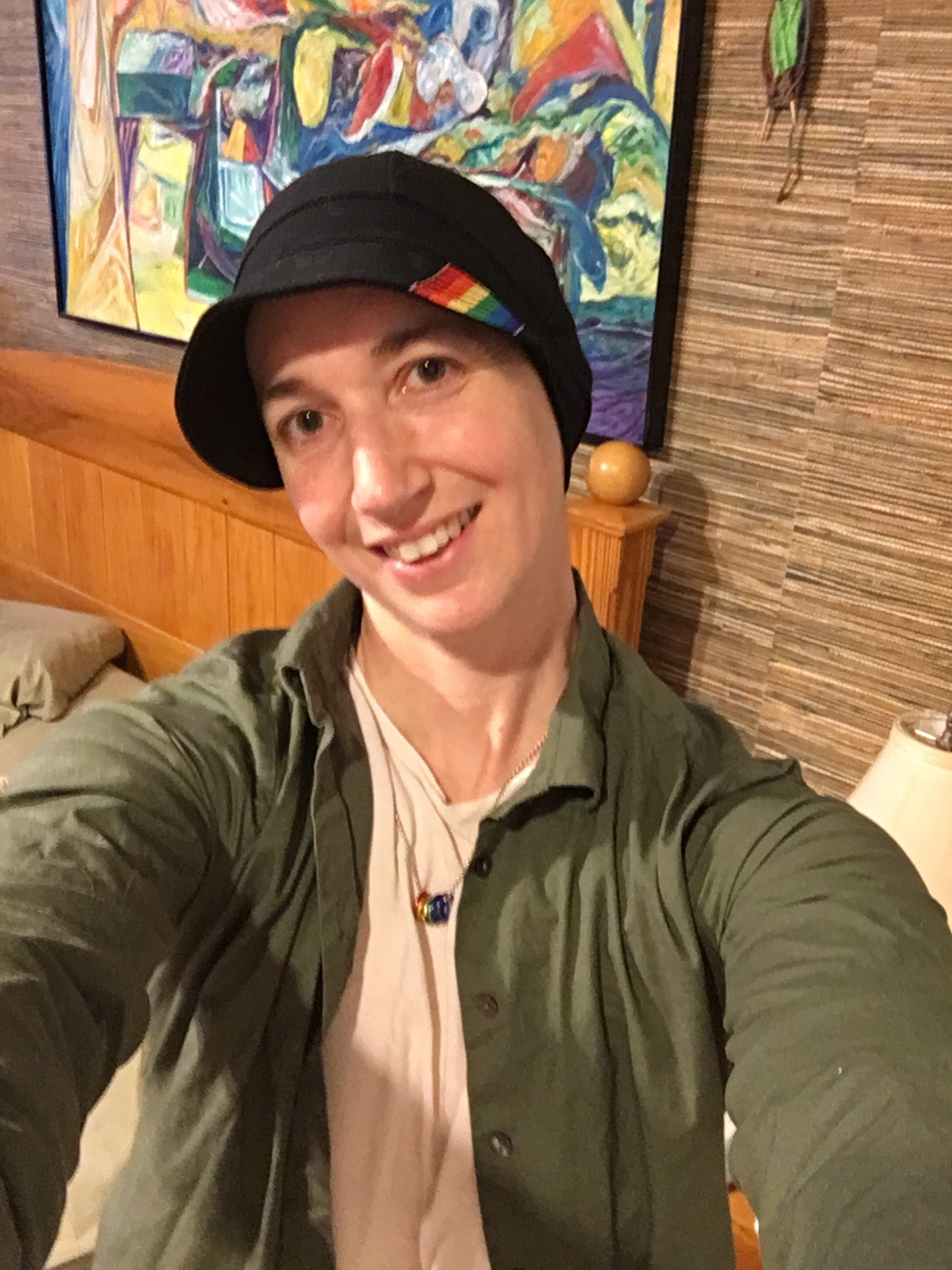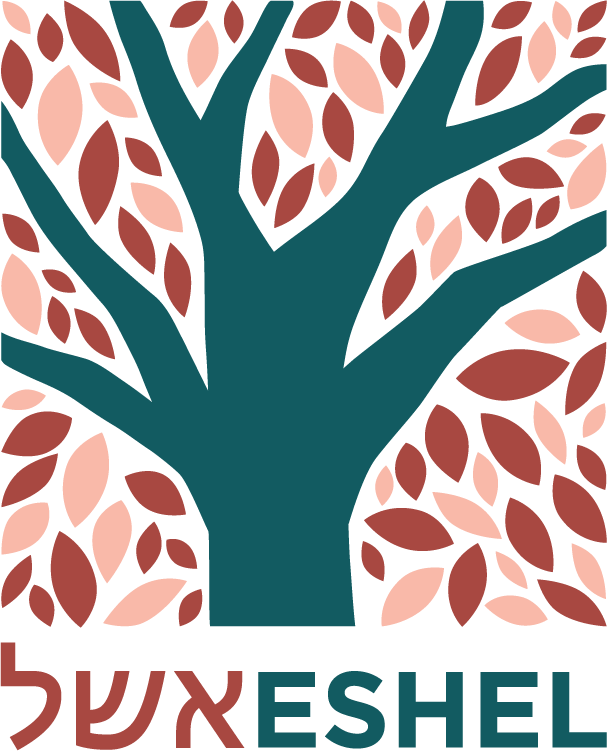 I am an Orthodox Jew. I’m also an openly Bi-woman who is an active part of the Jewish LGBTQ community, particularly the Orthodox group for support and acceptance called Eshel. I also have a lot of awesome friends in the Orthodox community—friends who love and support me for who I am and believe in a Judaism that loves all Jews. Even though I didn’t grow up keeping kosher or keeping Shabbos, I found meaning in keeping these mitzvot. A big part of my connection to Judaism and mitzvot began when I was living in Durham, NC.
I am an Orthodox Jew. I’m also an openly Bi-woman who is an active part of the Jewish LGBTQ community, particularly the Orthodox group for support and acceptance called Eshel. I also have a lot of awesome friends in the Orthodox community—friends who love and support me for who I am and believe in a Judaism that loves all Jews. Even though I didn’t grow up keeping kosher or keeping Shabbos, I found meaning in keeping these mitzvot. A big part of my connection to Judaism and mitzvot began when I was living in Durham, NC.
I had graduated college, gotten married to my now ex-husband, and had my first child 9 months after the wedding. Most of my previous friend groups were still in college or grad school, and other women with young children at home seemed to already have a well-established social circle. My husband and I became good friends with the Chabad couple that had recently moved to Durham to set up a Chabad Center. The wife had a son close to my daughter’s age, and she became a good friend of mine. We took our kids to the playground and went mall walking when the weather was cold. I was often at Chabad meals or classes. And when my second pregnancy ended in miscarriage, the Rabbi called to check that I was doing ok. I felt very deeply that Chabad was a Jewish home for me.
When I moved to Baltimore I saw Chabad as a place where every Jew belonged, and I once again found a home in Chabad. Baltimore actually has two Chabad Shuls. I really liked the warmth and friendliness of the Rabbi at one of the Shuls and enjoyed going to his weekly women’s Tanya class for many years. But the other Chabad Shul was much closer to where I lived and had a little more space for the kids. Although I never developed a particular relationship with the Rabbi there, the Rebbetzin was always very friendly, especially to my parents and sister when they came to visit. I also met new friends there, many with kids my children’s age. I enjoyed going to Shul most every Shabbos morning with however many of my 6 children wanted to come. For over 12 years this Shul was my home.
About a year and a half ago, newly separated, I decided to officially “come out” in the Orthodox community on National Coming Out Day, via a Facebook post. I got a lot of love and support from my friends and family. The day I made the post happened to be the day Shemini Atzeret would begin that evening. I had bought a rainbow ring necklace like the one I used to wear in college. I was planning to wear it all the time now, as I had almost 20 years ago. The first time I wore it to Shul I was very nervous. But I don’t think anyone really noticed. That evening, for the start of Simchat Torah, one of my friends came up to me and excitedly told me, “Maia, you broke the internet!” referring to my coming-out post, with its many “likes” and positive comments. I felt happy and relieved. This was still my home. Although I knew there would likely be some people who were still intolerant towards members of the LGBTQ community, my friends at Shul and in the community were supportive. This Shul remained my home for another year and a half.
One week I was discussing the intersection of my queer and Jewish identity with my therapist. Sometimes I felt conflicted about my connection to the mitzvah of dressing modestly according to Jewish law and my feelings of being naturally gender-nonconforming. I felt a little stuck—long skirts and women’s head coverings normally read as typically feminine. I might have a buzz cut, but nobody saw it. My long sleeves and loose clothes also hid my build that was somewhat muscular for my size. But I didn’t feel wearing pants or uncovering my hair was the right choice for me. That Shabbos I decided to reevaluate my wardrobe a bit. I realized I really preferred plain, simply designed skirts and long sleeve shirts or button downs.
A lot of my Shabbos clothes had flowers or ruffles because I would usually wear anything that was the right length and size, but I found a nice outfit that was more of what I liked. Then, instead of wearing one of my usual Shabbos hats, I picked a black newsboy style hat my mom had given me that had a small rainbow on the brim. I did pause and give a moment’s thought to wearing this particular hat. I hadn’t worn it to Shul before, but I had been wearing my rainbow necklace for a long time and, usually, no one even noticed. And the people that did comment were friendly and complimentary. I went to Shul feeling good about what I was wearing. I enjoyed a nice davening and had a pleasant, restful Shabbos. Sunday morning I was getting ready to take my kids to the zoo when I checked my email. The Shul’s Rabbi had emailed me. It read:
Dear Ms. Baram,
It is well known that our Shul welcomes all Jews irrespective of their personal level of observance, nevertheless, our Shul’s standard scrupulously follows Halacha.
It was brought to my attention that you have recently begun to wear items of clothing that represent a particular orientation.
In as much as this is a public acknowledgment of something that is contrary to Halacha, it is unacceptable at our Shul.
You are welcome to continue attending our Shul, provided that you cease any such displays in the future.
Sincerely,
…….
I felt shocked. Since I was in the process of heading out with my kids, I tried to deflect the emotions, thinking of the ridiculousness of it, trying to laugh it off. But as I took the kids out to the car, part of me just wanted to sit down on the floor and cry. I posted the email he had sent me on Facebook and my friends were upset at the response I had gotten from a Rabbi. Many of my Chabad friends felt very strongly that this was not the way Chabad is supposed to be. I also reached out to my Eshel friends. That night I went over to the house of a couple from Eshel that I’m close with, and we talked about it and wrote our own response emails. This was mine:
Dear Rabbi ……..,
I have been a member of the Shul for over 12 years. I have always felt at home and surrounded by the community there—until I received your very hurtful email this morning. Being a member or supporter of the LGBT community does not in any way violate any halacha. It represents who I am as a person, and my commitment to treat all people equally. It is my understanding that simply existing as a Bi-woman does not possibly present any halachic concerns.
I have been open about the fact that I am an Orthodox member of the LGBT Community. As such, belonging to Shuls that uphold and embrace Ahavas Yisroel is extremely important to me. I never thought I would feel unwelcome in a Chabad Shul that claims to welcome everyone. Receiving such a cold, formal letter with no initiation of conversation, after calling the Shul home for 12 years was deeply upsetting.
I do want to continue to call the Shul my Shul, but I hope that I can be accepted for who I am, whether or not I wear a small rainbow that reflects that.
Sincerely,
Maia Bar Am
By the time I got home, I had received this response email from him:
Mrs. Bar Am,
I am sorry that my letter was upsetting to you personally, but I was not addressing you as a person rather what you chose to wear. Let me note that despite the fact that I am aware (and have been for a while) of your situation, I specifically made the point in my letter to you that you are welcome to come to our Shul and participate, as you have been doing for many years. What I objected to was any outward display of what I consider to be a Halachically unacceptable symbol. As the Rabbi of the Shul, it is my obligation to decide what the Halacha is and this my definitive ruling.
I trust that you will respect my decision and continue to be part of our Shul.
…..
That was when I cried. This was it. Perhaps I wasn’t being kicked out of Shul, but my rainbow was, and I wasn’t going to Shul without even my necklace. It was sad to be leaving the Shul I had called home for over 12 years; sad to be leaving the friends I had there. Several of my friends had already recommended more welcoming Shuls, but making such a definite change felt upsetting and unsettling.
I have since switched to a new Shul, and have found it very welcoming, to me and to any rainbow I happen to wear. In the end, I felt even more certain that visibility is important. One thing that struck me about the Rabbi’s email was his apparent refusal to even say the words “gay,” “Bi,” or anything LGBTQ related. He didn’t even say the word “rainbow” because then I suppose he would have needed to specify that it’s the Pride rainbow. Rabbis or organizations trying to keep an entire group of Jews invisible is not just hurtful but harmful. And more and more I’m seeing members of the Orthodox community don’t agree with it. The rainbow represents the diversity of the LGBTQ community. And part of that diversity includes LGBTQ Jews. Many queer Orthodox Jews have found that the community refused to have a space for them, but the has time come for all Jews to have a home. My rainbow is here to stay, and so am I.
Maia Bar Am
